Reviews: Membrane and vesicle trafficking in plant immunity and beyond ($)
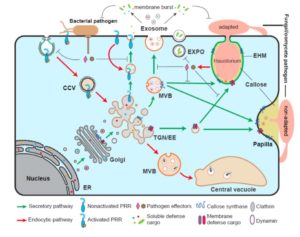 New reviews cover the hot topic of membrane and vesicle trafficking in plant immunity. Gu et al. (Mol. Plant 10.1016/j.molp.2017.07.001) provide an overview of the two membrane trafficking pathways: the secretory pathway involved in movement of antimicrobials, defense proteins and cell wall components outwards, and the endocytic pathway involved in movement of immune receptors inward for signal transduction. They describe the molecular players and regulators, features of these pathways that are unique to plants, how these pathways are involved in defense, and how pathogens sometimes co-opt them to supress immunity. Yun and Kwon (Curr. Opin. Plant Biol. 10.1016/j.pbi.2017.07.001) discuss the importance of membrane fusion in immunity-mediating exocytosis and endocytosis, and highlight the contributions of the SNARE proteins in membrane fusion. Although not specifically focused on immunity, the review by Noack and Jaillais (Curr. Opin. Plant Biol. 10.1016/j.pbi.2017.06.017) on phosphoinositides provides additional insight into the regulation of membrane trafficking. In the same issue, Isono and Kalinowska (Curr. Opin. Plant Biol. 10.1016/j.pbi.2017.07.003 ), Debaux and Vert (Curr. Opin. Plant Biol. 10.1016/j.pbi.2017.07.005), and Burkart and Stahl (Curr. Opin. Plant Biol. 10.1016/j.pbi.2017.06.016) discuss the role of endosomal sorting complex required for transport (ESCRT) and ubiquitination in endocytosis, as well as the dynamic complexity of plant receptor complexes at the plasma membrane. Even if you don’t find membranes exciting (!), this collection of papers is a must-read for insights into how plant cells perceive and control their environment.
New reviews cover the hot topic of membrane and vesicle trafficking in plant immunity. Gu et al. (Mol. Plant 10.1016/j.molp.2017.07.001) provide an overview of the two membrane trafficking pathways: the secretory pathway involved in movement of antimicrobials, defense proteins and cell wall components outwards, and the endocytic pathway involved in movement of immune receptors inward for signal transduction. They describe the molecular players and regulators, features of these pathways that are unique to plants, how these pathways are involved in defense, and how pathogens sometimes co-opt them to supress immunity. Yun and Kwon (Curr. Opin. Plant Biol. 10.1016/j.pbi.2017.07.001) discuss the importance of membrane fusion in immunity-mediating exocytosis and endocytosis, and highlight the contributions of the SNARE proteins in membrane fusion. Although not specifically focused on immunity, the review by Noack and Jaillais (Curr. Opin. Plant Biol. 10.1016/j.pbi.2017.06.017) on phosphoinositides provides additional insight into the regulation of membrane trafficking. In the same issue, Isono and Kalinowska (Curr. Opin. Plant Biol. 10.1016/j.pbi.2017.07.003 ), Debaux and Vert (Curr. Opin. Plant Biol. 10.1016/j.pbi.2017.07.005), and Burkart and Stahl (Curr. Opin. Plant Biol. 10.1016/j.pbi.2017.06.016) discuss the role of endosomal sorting complex required for transport (ESCRT) and ubiquitination in endocytosis, as well as the dynamic complexity of plant receptor complexes at the plasma membrane. Even if you don’t find membranes exciting (!), this collection of papers is a must-read for insights into how plant cells perceive and control their environment.


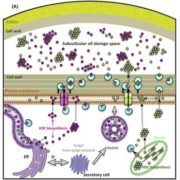


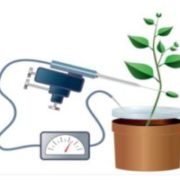
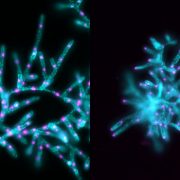
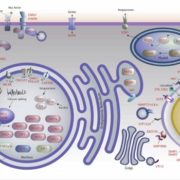

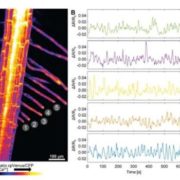


Leave a Reply
Want to join the discussion?Feel free to contribute!